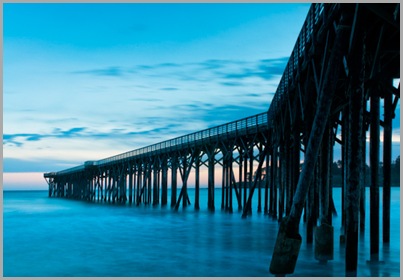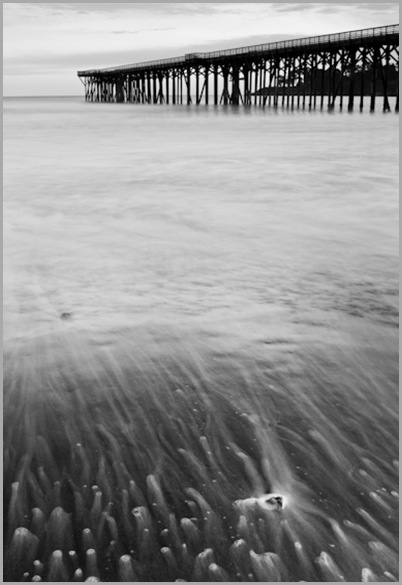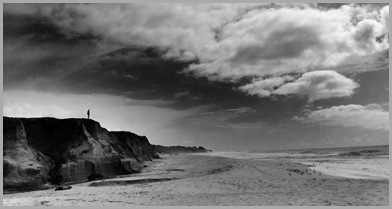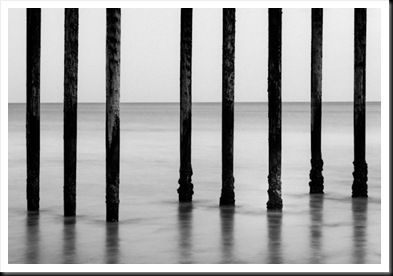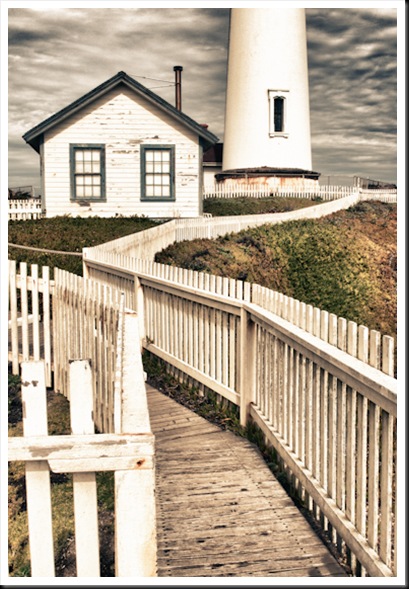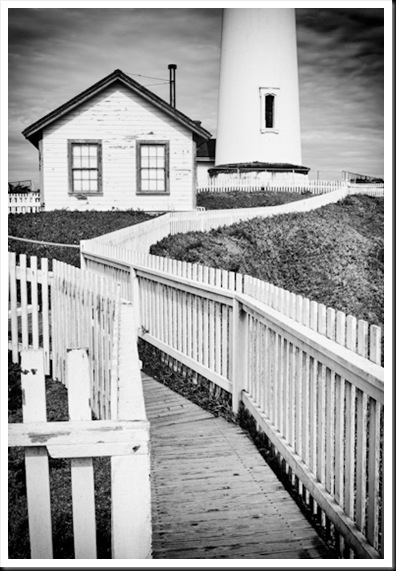It often seems to be the case when you are at the ocean that a cloud layer comes in from the west just before sunset. That was the case when I went out to shoot near Cambria, California. An hour before sunset the clouds rolled in and there went the nice warm glow on the cliffs. Instead of hanging it up, I decided to drive back to a pier I had seen earlier. A nice pier jutting off into the ocean near Harmony, CA. I wanted to work more with long exposures (5+ sec) that night and the waves breaking at the base of the pier would work nicely.
As always, when working a subject, you should try different compositions, framing options – vertical and horizontal, abstract parts of the subject, visualize different post processing, etc. I have included just a couple of the images here from that evening shoot.
The first image is a 30 sec exposure which is what gives the water such a mysterious look – large waves really add to this effect. The blue water and sky add to the very soothing yet mysterious image where the pier draws you in.
The second image exposure time is less than that of the first, only about 8 seconds. It was timed so that the wave was receding into the ocean, creating lead in lines using the trails from the stones. There was one larger stone that I carefully placed in the frame before the wave came in.
The third image has a simple rhythm. Note that your eye is drawn to the break in the rhythm. The rule of thirds was applied here, not by placing the subject there but the absence of one (negative space). In this case, a 15 sec exposure was sufficient to smooth the water and eliminate strong distracting details in the water. The sky and water were becoming nearly one in tone as the evening came on.

